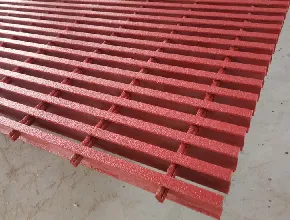loading...
- No. 9, Xingyuan South Street, Dongwaihuan Road, Zaoqiang County, Hengshui, Hebei, China
- admin@zjcomposites.com
- +86 15097380338
- Welcome to visit our website!
fiberglass rebar cost
Understanding the Cost of Fiberglass Rebar
When it comes to modern construction materials, fiberglass rebar has gained considerable attention due to its distinct advantages over traditional steel rebar. While cost is often a deciding factor in construction projects, it is crucial to consider the overall benefits and longevity that fiberglass rebar brings to the table. This article will delve into the costs associated with fiberglass rebar and why it may be a worthy investment.
What is Fiberglass Rebar?
Fiberglass rebar, or glass fiber reinforced polymer (GFRP) rebar, is made from a combination of glass fibers and a polymer matrix. Unlike steel rebar, fiberglass rebar is non-corrosive, lightweight, and offers significant tensile strength. These properties make it an excellent alternative for a variety of applications, particularly in environments that are prone to corrosion, such as coastal areas or regions where de-icing salts are commonly used.
Cost Breakdown
The cost of fiberglass rebar can vary based on several factors, including type, size, and supplier. On average, fiberglass rebar can range from $0.75 to $2.00 per linear foot, depending on the diameter and specific type. In comparison, traditional steel rebar typically costs between $0.20 to $0.80 per linear foot. At first glance, fiberglass rebar may seem significantly more expensive. However, the true cost assessment goes beyond just the initial purchase price.
Long-Term Savings
fiberglass rebar cost

One of the most compelling arguments for choosing fiberglass rebar over steel is its long-term cost efficiency. Although the upfront cost may be higher, fiberglass rebar is far more durable and resistant to environmental factors. This leads to lower maintenance costs and longer lifespans for structures where it is used. In many cases, the savings from reduced maintenance and repair efforts can outweigh the initial investment.
For instance, in marine constructions, using fiberglass rebar can lead to substantial savings. When steel rebar rusts, it can cause spalling, which requires costly repairs and can compromise the integrity of the structure. Fiberglass rebar's resistance to corrosion means that such repairs are often unnecessary, facilitating lower lifetime costs for projects.
Installation Considerations
Another factor that impacts the overall cost of fiberglass rebar is the installation process. Fiberglass rebar is lighter than steel, which can translate to reduced labor costs during installation. Workers can handle it more easily, and less heavy equipment may be needed, contributing to savings in labor and equipment rental expenses.
Conclusion
In conclusion, while the upfront cost of fiberglass rebar may be higher than traditional steel, it is essential to factor in long-term benefits and savings when evaluating overall expenses. While it excels in specific contexts—especially in corrosive environments or specialized applications—the initial investment may be justified by lower maintenance costs, increased longevity, and ease of installation. Ultimately, choosing fiberglass rebar can be a strategic decision for construction projects, emphasizing durability and cost-effectiveness over time.
For builders and engineers, understanding fiberglass rebar's total cost and benefits can lead to more informed decision-making, paving the way for more resilient and sustainable construction practices. As the industry continues to evolve, the adoption of innovative materials like fiberglass rebar is likely to increase, and its cost-effectiveness will become more widely recognized.
-
GRP Structures: The Future of Lightweight, High-Performance EngineeringNewsJun.20,2025
-
FRP Water Tank: High-Performance Storage for Corrosive and Clean Water SystemsNewsJun.20,2025
-
FRP Square Tube: The New Industry Standard for Chemical and Structural ApplicationsNewsJun.20,2025
-
FRP Pultruded Profiles: The Ultimate Choice for Lightweight Structural StrengthNewsJun.20,2025
-
FRP Handrails: The Safer, Smarter, and Stronger Choice for Modern InfrastructureNewsJun.20,2025
-
FRP Grating: The Smart Solution for Durable, Lightweight Industrial FlooringNewsJun.20,2025
-
Why Choose a Galvanized Water Tank for Your Storage NeedsNewsMay.21,2025
